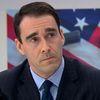
As we edge closer to another presidential election, one topic that has received almost no attention from the candidates is climate change. This at a time when Americans are finding their lives more beset by the symptoms of a changing climate, such as extreme heat, widespread drought, and violent storms never seen in living memory.
Hurricane Sandy -- dubbed "Frankenstorm" because it represents such a freakish combination of weather systems, size, strength, track, and timing -- is just the most recent example.
Still, given all of the effort and money special interests have expended politicizing climate change; it is easy to see how silence on the issue might seem to be the safest option -- at least from a short-term political standpoint. However, avoiding tough and complex problems is not a hallmark of leadership.
Today's candidates should follow Ronald Reagan's example.
President Reagan faced a climate problem in the mid-1980s. Climate scientists were warning about chemicals that were dangerously thinning the atmosphere's protective ozone layer. Al Gore and other left-of-center politicians quickly glommed onto the issue, while right-wing "think tanks" and some business interests dismissed the concern and sought to discredit the science.
Sound familiar?
Reagan's Cabinet was split, with the Environmental Protection Agency (EPA) and the State Department favoring a tough international treaty to address the problem, and the Departments of Interior and Commerce among those opposed.
President Reagan did what a true conservative should. He rose above the politically charged rhetoric and honestly searched for the truth. He sided with the best available science on the topic and -- by giving the State Department direction to negotiate the strongest possible treaty -- took prudent action to address it.
The result was the Montreal Protocol Treaty to begin phasing out production of the ozone-depleting gases. The Montreal Protocol is widely regarded as the most successful environmental treaty in history. Thanks to Reagan (not Gore), the ozone layer is healing.
Reagan took action despite the fact that ozone depletion was not as well researched or understood as climate change is today. Former Secretary of State George Shultz said that Reagan viewed the action as a necessary "insurance policy" to guard against a very serious public health risk.
The parallels between the ozone-depletion problem Reagan faced and the climate change problem confronting today's leaders are striking: warnings by scientists, doubters trying to discredit those warnings, ideological posturing. Even Al Gore.
One noteworthy difference is that while the ozone depletion problem was not yet visible to the public, the impacts of climate change are. The evidence of the problem has moved from the laboratory to Main Street.
Since January, more than 30,000 high temperature records have been broken. Long-term drought conditions plague much of the country, while unprecedented storms have hit others. We are seeing tornadoes wreak havoc year round, and in places where such violent weather has never before occurred. Rare flood events that were predicted to come once every 500 years are now showing up every 2 or 3 years.
In isolation, each individual weather event might be explained away, but collectively they become symptomatic of an altered climate and reflect broader changes that climatologists have been predicting for decades.
The economic costs are mounting as well. During this year's growing season, the Department of Agriculture designated more than half of America's counties as primary disaster areas due to drought or other weather-related crop damage. In 2011, insured losses from natural disasters cost roughly $36 billion. Almost all the nation's costliest natural disasters have occurred in the past decade.
Not surprisingly, public concern is on the rise. According to just-released polling conducted jointly by Yale and George Mason Universities, 70 percent of Americans believe climate change is happening and more than half are convinced that it is due to human activities. An increasing percentage of Americans, 58 percent, indicated they are worried about climate change, the highest level since the current economic downturn began.
While President Obama and Governor Romney may think they are avoiding risk by not discussing climate change, the opposite is true. Not talking about climate change is far more risky -- not just for them, but for all of us.
Like President Reagan, they need to rise above partisanship and commit to finding solutions that will ensure a stable and healthy climate.
As Reagan himself put it:
If we've learned any lessons during the past few decades, perhaps the most important is that preservation of our environment is not a partisan challenge; it's common sense. Our physical health, our social happiness, and our economic well-being will be sustained only by all of us working in partnership as thoughtful, effective stewards of our natural resources.
One good way to remind our leaders of this is to sign the American Eagle Compact. The Compact, which has more than 64,000 signatures so far, is a cooperative effort by ConservAmerica and the National Audubon Society to show that good stewardship transcends partisan differences and ought to be a national priority.
